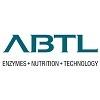Check out what is new in Poultry Industry
Find the best technical articles, forums, and videos on Poultry Industry at Engormix. Enter now and interact with the world's largest agricultural social network.
INTRODUCTION Campylobacter is a leading bacterial cause of human gastroenteritis, annually accounting for approximately 166 million diarrheal cases around the world, particularly in developed countries (Kirk et al., 2015). Campylobacter infection in humans develop fever, vomiting, abdominal pains, and diarrhea, and in some cases Guillain–Barré syndrome, an autoimmune disorder characterized by acute and progressive neuromuscular paralysis (Young et al., 2007). Human...
Comments : 0
Recommendations: 0
Jeyashree Elango (University of Delaware) Enteroids provide a 3-dimensional microenvironment of the intestine, acting as a miniature model for understanding intestinal functions and immune responses. Hence, this shows a promising application in studying disease models and drug screening, among others. Salmonella enterica serovar Typhimurium is one of the food-borne pathogens affecting human health through production animals due to contaminated meat...
Comments : 0
Recommendations: 2
Ryan Arsenault (University of Delaware) Significant research and development has been committed to finding alternatives to antibiotics that are at least as effective as conventional antibiotics in preventing disease and promoting growth. It has been well known for 70 years that antibiotics have this dual disease/growth effect. However, it was only around the turn of the century that consideration of antibiotic host effects on growth and immunity were...
Comments : 0
Recommendations: 0
Brian Aldridge (University of Illinois) Biological health is a complex topic of discussion and is often misunderstood as existing as a binary state in terms of the presence or absence of disease. In many ways, it is useful to explain health at a population or system level as the existence of individuals in 1 of 3 states: those in a healthy condition, those with a prediseased status, and those in a diseased state. At a systems level, it is useful to...
Comments : 0
Recommendations: 2
Annelies Kers (Utrecht University) Knowledge of factors that influence the functioning of gut microbes is essential to improve health and reduce the use of antibiotics in poultry production. The environment, and more specifically housing conditions, can affect the gut microbiome of broiler chickens. The gut microbiome is defined as the collection of all the microorganisms and their “theatre of activity” in the gut environment. Previous...
Comments : 0
Recommendations: 0
Theresia Lavergne (Natural Biologics) To produce resilient and healthy poultry, it is necessary to understand the effects of diet and dietary feed additives on the microbiome and its development. This trial was conducted to evaluate the microbiota of broilers 14, 28, and 42 d of age, while feeding them a combination of yeast postbiotics and fermentation extracts (Provillus 4Poultry). A total of 300 Ross 308 male chicks were allotted to 2 treatments:...
Comments : 0
Recommendations: 2
Kostas Mountzouris (Agricultural University of Athens) A deeper understanding of critical bird homeostasis responses may augment poultry industry efforts for improved bird resilience and production sustainability. The aim of this work was to explore the expression range of critical genes in the broiler gut as responses to diverse dietary inputs. The gene transcripts studied were grouped based on their functional role under functional indices, termed...
Comments : 0
Recommendations: 1
Christos Gougoulias (Innovad) Modern poultry broiler production strives for the maximum live weight, which can contribute to chronic intestinal inflammation and broader metabolic syndromes. There is thus a need to establish realistic models that help the industry. Several challenge models have been proposed by the scientific community and these include biological agents or pathogens, chemicals, reused litter, and, more recently, different non-starch...
Comments : 0
Recommendations: 1
Mueez Ahmad (Arm & Hammer) Enterococcus faecalis is considered a normal inhabitant of the poultry gastrointestinal tract. Although it has been known to be an opportunistic poultry pathogen, high levels of this organism can be recovered from the intestinal tract of normal, healthy birds with no known disease issues. More recently, an increasing number of poultry veterinarians and diagnostic laboratories have been reporting that E. faecalis is...
Comments : 0
Recommendations: 0
Ioannis Brouklogiannis (Agricultural University of Athens) This study was conducted to investigate the inclusion level effects of a natural phytogenic blend (PB) on production performance, egg quality, and underlying detoxification (aryl hydrocarbon receptor; AhR), antioxidant (nuclear factor erythroid 2-related factor 2; Nrf2) and inflammatory (nuclear factor-kappa B; NFκB) responses in layers’ duodena and ceca. Depending on PB...
Comments : 0
Recommendations: 0
In a bid to enhance animal health and nutrition for sustainable food security in Sub-Saharan Africa, Livestock Industry Foundation for Africa (LIFA), with the support of the Zoetis Foundation, orchestrated a groundbreaking initiative in West Africa titled “Knowledge Update on Poultry Health and Nutrition.” This transformative program aimed to impart critical knowledge and skills to enhance poultry health practices in the region.
Spanning two significant sessions held on...
Comments : 0
Recommendations: 1
1. Introduction The application of antibiotics on poultry farms has been linked to the global emergence of multi-drug-resistant (MDR) bacteria in recent years (Benrabia et al., 2020; Kaonga et al., 2021). MDR bacteria can spread from food-producing animals to humans through direct contact with the food chain and the environment (Kirbis and Krizman, 2015). One-Health issues are still an important topic in the poultry industry, pre-harvest as well as post-harvest. Efforts...
Comments : 0
Recommendations: 1
Unlike many aspects of operating a tunnel-ventilated house during hot weather, the performance of an evaporative cooling pad system is relatively predictable. This is because there are well defined relationships between the cooling produced by a pad system and water usage, pad area, outside temperature/humidity, and water temperature. Since most evaporative cooling pads are essentially identical and the summertime conditions are fairly similar across most poultry growing areas of the U.S.,...
Comments : 0
Recommendations: 1
There are essentially two types of poultry house circulation fan systems: vertical and horizontal. In a vertical circulation fan system, fans are located in the center of the house, typically near the ceiling, and are oriented to blow straight down towards the floor. The air then moves across the floor, up the side walls, and back...
Comments : 0
Recommendations: 1
Bio-security is the cheapest, most effective means of disease prevention and control available. Proper bio-security will help to ensure the overall health and welfare of your flock. ...
Comments : 0
Recommendations: 0
In cage-free housing, multi-tiered aviary structures are often used (pictured above), where key resources (i.e., feed, water, nests, perches) are available on elevated platforms called tiers, and litter substrate is available on the ground floor for dustbathing and foraging. Hens move vertically and horizontally...
Comments : 0
Recommendations: 0
A properly designed circulation fan system can provide a grower with a variety of benefits. During cold weather, circulation fans can transfer hot air collecting near the ceiling to bird level, increasing floor temperatures and decreasing heating costs. Circulation fans can also help move warm air from the center of a house towards the cooler...
Comments : 0
Recommendations: 1
Preventing injury to a chicken’s foot pads (paws) is very important for a number of reasons. First, chicken paws are a valuable product, a delicacy in some cultures, and often sell for as much as two to three times as breast meat on a per-pound basis. Secondly, foot pad lesions can become infected, resulting in leg problems and a decrease in overall bird performance. Last but not least, a chicken’s feet are a good indicator of litter quality. Numerous studies have documented the...
Comments : 0
Recommendations: 1
Negative pressure ventilation is the most popular method of ventilating poultry houses during cold weather due to it’s simplicity and relatively low initial and operating costs. Exhaust fans create a low-pressure zone within a house and give a producer precise control over the amount of fresh air brought into a house. Air inlets uniformly distribute fresh air drawn in by the exhaust fans throughout the house and direct it along the ceiling, where the hot air (produced by the...
Comments : 0
Recommendations: 1


.jpg&w=3840&q=75)



.jpg&w=3840&q=75)


.jpg&w=3840&q=75)



.jpg&w=3840&q=75)

.jpg&w=3840&q=75)
.jpg&w=3840&q=75)


.jpg&w=3840&q=75)

.jpg&w=3840&q=75)
.jpg&w=3840&q=75)

.jpg&w=3840&q=75)
.jpg&w=3840&q=75)





.jpg&w=3840&q=75)





.jpg&w=3840&q=75)






